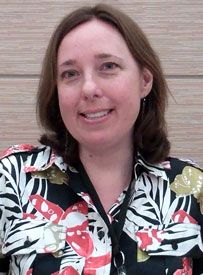Oncology Nurses Explore the Social Media Scene
Social media programs allow oncology nurses to network, share information, and learn evidence-based practices

Julia Whiteker, MSN, RN
Social media programs allow oncology nurses to network, share information, and learn evidence-based practices. At the 36th Annual ONS Congress, the ONS Breast Care Special Interest Group (SIG) described its experience with social media tools.
The Breast Care SIG entered the social media scene by creating a Facebook page and a Twitter account. The group now has 2970 “likes” on Facebook from 24 countries, including Saudi Arabia and Ghana, and 252 followers on Twitter.
The social media platform has allowed the Breast Care SIG to create a peer support network. “What we found is that nurses want to know practical information—what they can use to help patients, resources that are available, Websites that have good information, [and] places to get CE [continuing education],” said Breast Care SIG social media editor, Julia Whiteker, MSN, RN, Clarian North Medical Center, Carmel, Indiana.
Whiteker posts 2 to 3 times per week on Facebook and less frequently on Twitter.
Active member participation on Facebook has also created an element of self-maintenance, whereby Whiteker does not have to create all the content. She will post a news story or a resource link that will trigger a conversation among nurses and, in turn, boost the page’s content.
To ensure the integrity of its content, the Breast Care SIG adopted social media policies. “We want to make sure that the content we post is verified content,” said Whiteker. “When I look at content, if I’m not sure, I verify it with colleagues,” she said. Whiteker also stressed the importance of remaining neutral and not offering opinions on controversial issues, since the posts are coming from the organization, not individual members.
Going forward, the Breast Care SIG hopes to use an enhanced blog presence on the ONS virtual network to extend its social media offerings. Both Facebook and Twitter have limitations on the content length of individual posts. A blog would allow the Breast Care SIG to create longer posts and link to them from Facebook and Twitter. Whiteker hopes the enhanced content will help the Breast Care SIG become a “go-to voice” on the Internet for breast care nursing. Abstract 1050178
Latest Conference Coverage

Navigating the Intersection of Radiation Therapy and Immunotherapy in Endometrial Cancer

As Orthopedic Oncology Evolves, Caring for the Clinician Must Be a Priority

Belumosudil Produces Long-Term Responses Without New Safety Concerns in cGVHD

Prophylactic Itacitinib May Safely Mitigate CRS Following Axi-Cel Administration in Lymphoma
2 Commerce Drive
Cranbury, NJ 08512